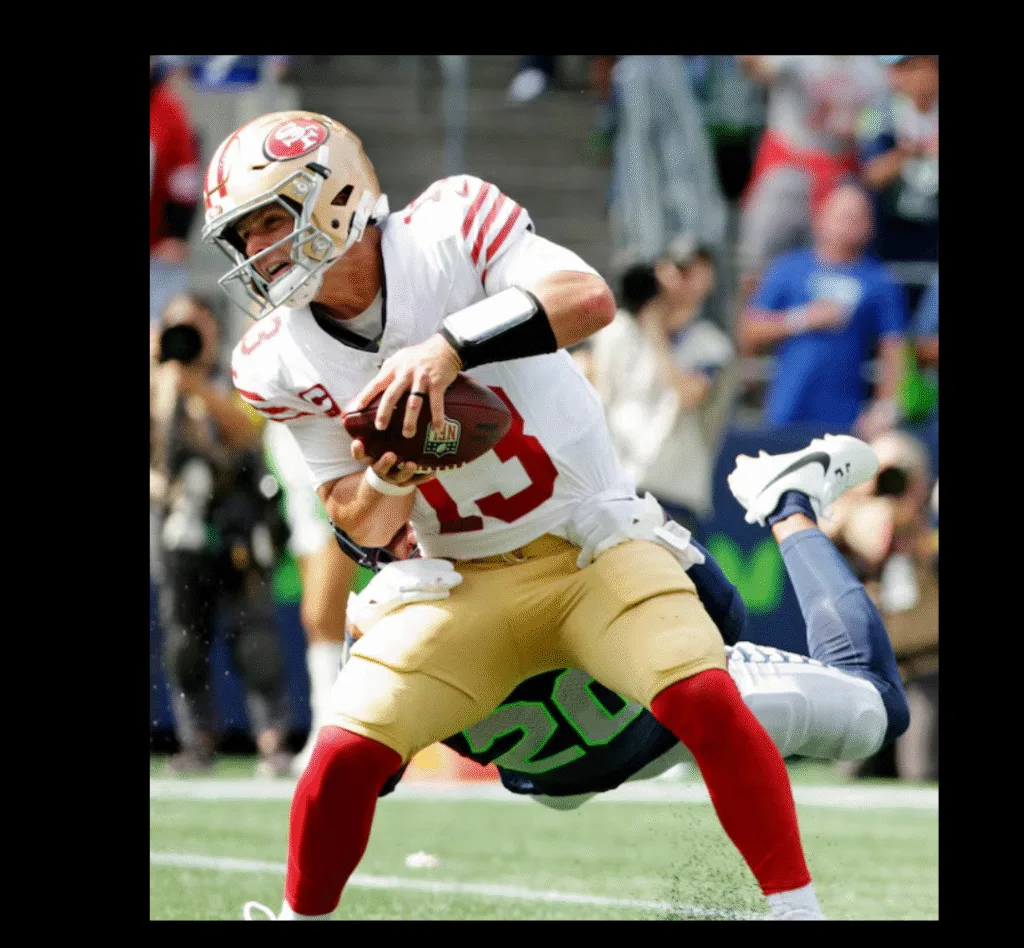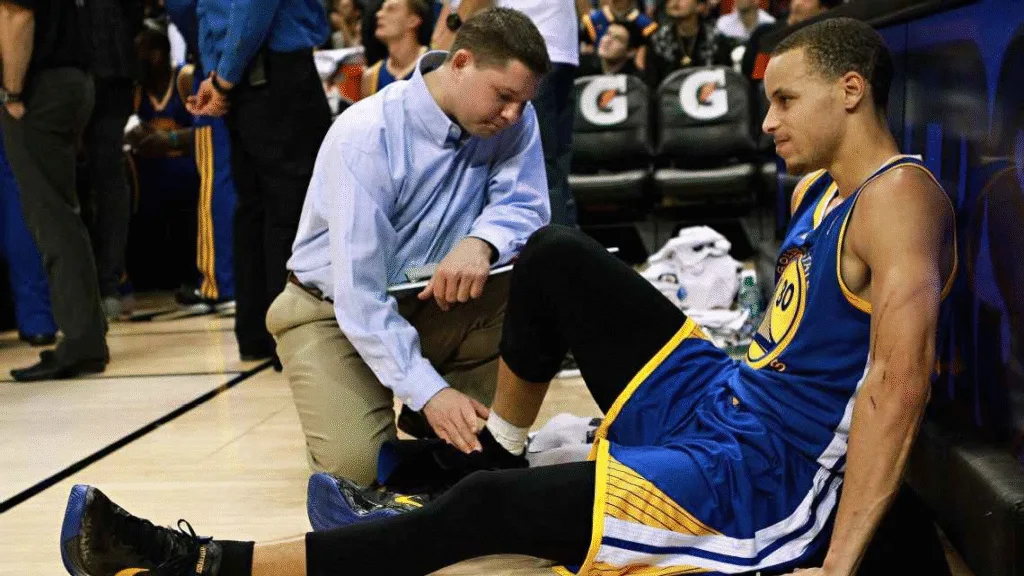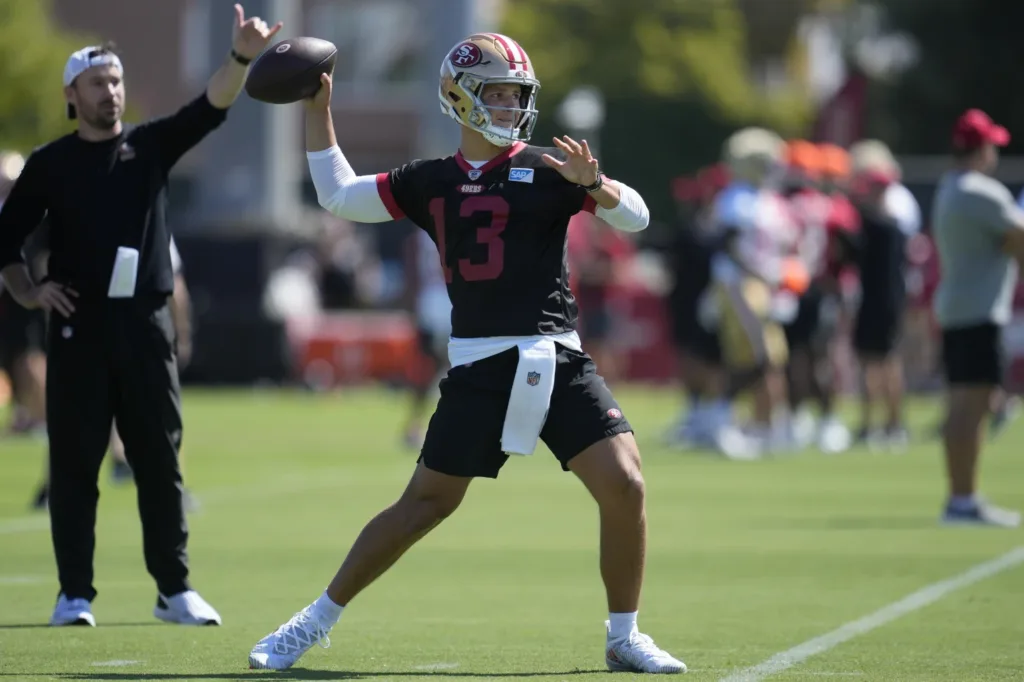
Brock Purdy data source Google
Sports kinetics is the study of how forces and motion affect the human body during athletic activity. For a quarterback, every ounce of power in a throw originates from the ground, traveling up the kinetic chain. A “turf toe” injury—a sprain of the big toe joint—is a seemingly small issue that can catastrophically disrupt this chain, crippling a player’s ability to push off and deliver a pass. It’s a vivid example of how a minor physical flaw can create a major athletic crisis.

Curryankle data_youtube
Similarly, Stephen Curry’s early career was nearly derailed by a series of persistent ankle injuries. Ankles were a fundamental threat. He faced a monumental challenge not just to recover, but to fundamentally rebuild his body to withstand the demands of the NBA.

Purdycamp youtube
The greatness of athletes like Purdy and Curry isn’t just in their on-field performance; it’s in their ability to master the long, grueling process of rehabilitation. It’s a journey that is as much mental as it is physical. An injured athlete must confront the psychological toll of being sidelined, the fear of re-injury, and the pressure to return to their peak form. It requires a holistic approach, where physical therapy and biomechanical analysis are paired with unwavering mental fortitude.
The comeback stories of these athletes, and countless others, are a testament to the advancements in sports medicine and the indomitable nature of the human spirit. They remind us that the most inspiring moments in sports are often born not from effortless dominance, but from the hard-fought battle to return to the game you love, stronger and more resilient than before.
